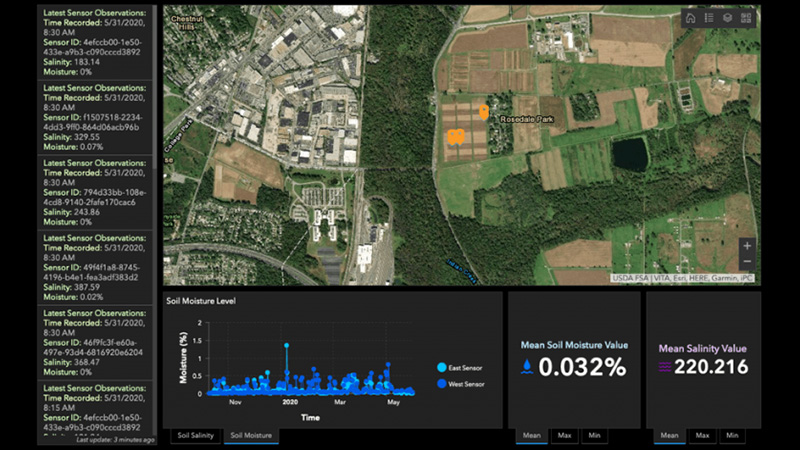Measure Of Age In Soil Nitrogen Could Help Precision Agriculture
What’s good for crops is not always good for the environment. Nitrogen, a key nutrient for plants, can cause problems when it leaches into water supplies. University of Illinois engineers developed a model to calculate the age of nitrogen in corn and soybean fields, which could lead to improved fertilizer application techniques to promote crop growth while reducing leaching.
Civil and environmental engineering professor Praveen Kumar and graduate student Dong Kook Woo published their work in the journal Water Resources Research.
“By understanding how long nitrogen stays in the soil and the factors that drive that, we can improve the precision at which we apply nitrogen for agriculture productivity,” said Kumar, also a professor of atmospheric sciences. “We may be able to apply fertilizer specifically in areas that are deficient in nitrogen, in precisely the amount that the plants need to uptake, rather than just applying it uniformly. Potentially, we could see a significant reduction in fertilizer amounts.”
Plants take up nitrogen from the soil through their roots as a nutrient. Nitrogen is added to the soil through fertilizer application or by microbes in the soil breaking down organic compounds. However, when there is more nitrogen in the soil than the plants need, it leaches out into the water and can accumulate in lakes, rivers and oceans.
“Nitrogen, usually in the form of nitrate fertilizer, is needed for healthy crop production, but too much is not a good thing since the excess can contaminate water supplies,” said Richard Yuretich, program director in the National Science Foundation’s Division of Earth Sciences, which funded the research. “Knowing how long nitrate resides in the soil will lead to more efficient agriculture that maximizes plant health without overdosing the environment.”
Read the full story on PrecisionAg.com.






